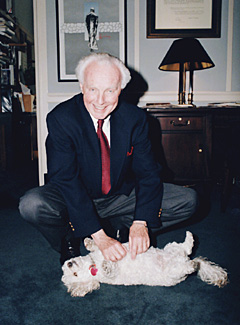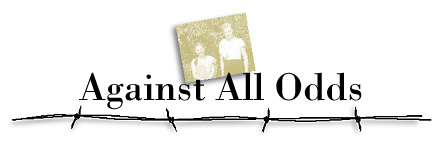In 1978, he took a year's leave of absence to go to Washington, D.C., to work as a foreign affairs adviser to Sen. Joe Biden (D-Delaware). He enjoyed it so much, he pondered running for Congress after the 1979 assassination in Guyana of Leo Ryan, the House representative from San Mateo. "But Sen. Biden reminded me that I promised to stay for the duration of my commitment," Lantos says. "It was also a good thing, because had I run, I would have lost."
In 1980, Lantos threw his hat into the ring against incumbent Republican Bill Royer, who succeeded Ryan. That move earned him ridicule from observers who said Lantos had no chance, never having held public office and running as a Democrat during a year when the Ronald Reagan-Republican movement was sweeping the nation. But beating the odds was old hat to Lantos, who defeated Royer to become one of only two Democrats nationwide to unseat an incumbent Republican that year.
That started in motion a political second life that has kept the confident, erudite Lantos in the public eye and fighting injustice for the past 20 years. He is known far and wide for his support of Israel, and for fighting government waste, such as his stint as chair of the committee investigating HUD scandals of fraud, influence peddling and political favoritism in the 1980s.

Lantos and his dog, Gigi.
Lantos' passion for good government knows no bounds. "My life's experience taught me. I had seen what a police state does to people," Lantos says. "I had to be a part of the policy part, to make things better. I have developed a lifetime love affair with politics and government. I take government very seriously. I have a passion to make sure we prevent others from going through what I did."
Despite his national exposure as a longtime member of Congress, Lantos and his wife have rarely told their stories publicly. "I don't want to relive that nightmare," he explains. But back in 1995, when he was approached by the Shoah Foundation ("shoah" is Hebrew for calamity) for an oral-history project on the Holocaust, he agreed. When Spielberg's foundation decided to make a documentary featuring some of those interviewed, director James Moll chose to feature Lantos among four other Hungarian survivors' stories.
"I did it because I felt the educational value of the film for generations to come would be enormous," says Lantos. "It was not an easy or pleasant task but I knew it would be a powerful and gripping reminder of this nightmare that must not be forgotten."
For the making of the movie, Lantos returned with four of his 17 grandchildren to the bridge in northern Hungary where he was forced to work. They listened somberly as he tells his story.
Lantos was one of five Hungarian survivors asked to participate to show a representational view of what happened to the entire country. Each survivor and selected family members then traveled to Europe with the documentary film crew to revisit their homes, where they were imprisoned, and where they worked. The movie was shot on 35mm film, much of it with a handheld camera, had no narrator, and included rare footage to tell a single, unique chapter of the Holocaust while conveying a sense of its magnitude.
The movie, winner of the 1999 Academy Award for best documentary, is one part of the Shoah Foundation's mission to videotape and preserve eyewitness testimonies of Holocaust survivors. To date, more than 50,000 videotaped interviews in a total of 57 countries and 31 languages have been gathered.
"For me to be where I am, given my background, is something I cannot possibly believe," Lantos says. "Fifty years ago, I was a hunted animal in the jungle, and now I am dealing with issues of state of a country I love so deeply. It all seems like a dream, and it places an incredible sense of responsibility on me.
"It is why I will carry on."
Jon Marmor, '94, is associate editor of Columns. The Last Days was released in video stores in September.
- Return to the Beginning of "Against All Odds"
